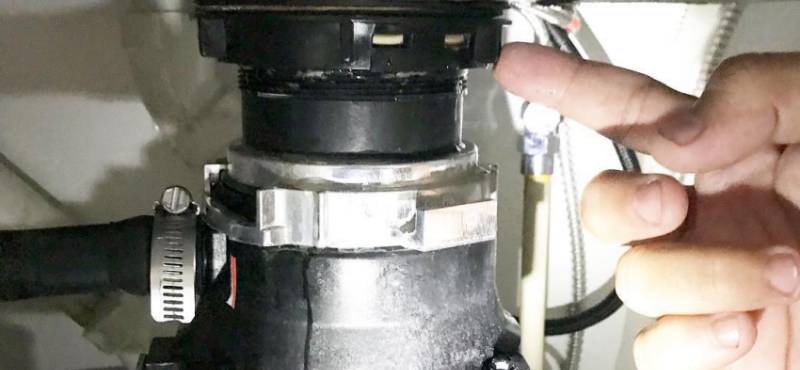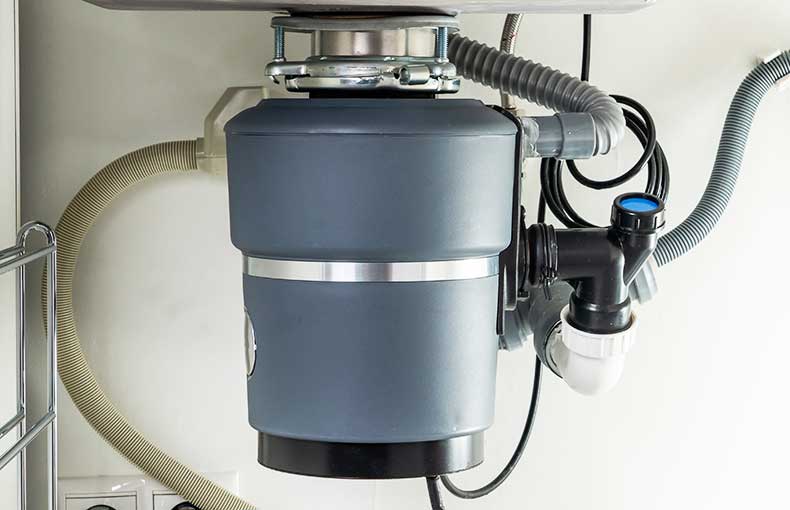Simple Techniques for Repairing a Leaky Garbage Disposal
Simple Techniques for Repairing a Leaky Garbage Disposal
Blog Article
We've stumbled upon this article on How to fix a pretty consistent leak from my garbage disposal listed below on the web and thought it made sense to discuss it with you here.

Waste disposal unit are necessary kitchen area devices that help in getting rid of food waste efficiently. Nevertheless, a dripping waste disposal unit can be an irritating and untidy problem to manage. The good news is, numerous leakages can be fixed easily with a couple of basic actions. In this short article, we will certainly review exactly how to deal with a dripping waste disposal unit efficiently.
Introduction
Garbage disposals are set up under cooking area sinks and are created to shred food waste into smaller sized items, enabling it to pass through the plumbing system quickly. While these gadgets are generally reliable, leaks can happen over time because of damage, loosened connections, or damage to the system.
Step-by-Step Guide to Repairing a Leaking Waste Disposal Unit
Switch off the Power
Prior to attempting any fixings, make certain that the power to the waste disposal unit unit is switched off to prevent the threat of electric shock.
Find the Leak
Recognize the precise area of the leak and figure out the cause
Tighten up Links
Use a wrench to tighten any type of loose connections between the disposal system and the pipes system.
Change Seals or Gaskets
If the leak results from used seals or gaskets, get rid of the old components and replace them with brand-new ones.
Patching Fractures or Holes
For splits or openings in the disposal unit, usage epoxy or an appropriate patching material to secure the broken area.
Determining the Resource of the Leak
Prior to attempting to fix a leaking waste disposal unit, it is essential to determine the source of the leak. This can usually be done with aesthetic inspection or by conducting basic examinations.
Visual Examination
Evaluate the garbage disposal system thoroughly for any kind of indications of water leakage. Pay close attention to areas around seals, gaskets, and link factors.
Examining for Leakages
One means to examine for leakages is by running water via the disposal system and checking for any type of visible signs of leak.
Usual Root Causes Of Leaks in Waste Disposals
Worn Seals and Gaskets
Seals and gaskets play an important duty in protecting against water from dripping out of the waste disposal unit. Gradually, these parts can deteriorate, leading to leaks around the disposal unit.
Loose Connections
The links between the garbage disposal and the plumbing system can come to be loosened over time, creating water to leakage out during operation.
Cracks or Holes in the Disposal System
Physical damage to the garbage disposal, such as cracks or openings in the real estate, can likewise result in leakages.
Devices and Materials Needed for Dealing With a Leaking Waste Disposal Unit
Before beginning the repair service procedure, gather the required devices and products, consisting of a screwdriver, adjustable wrench, plumbing's putty, replacement seals or gaskets, and epoxy or patching material for fixing cracks or openings.
Checking the Garbage Disposal After Repair Service
When the fixing is complete, check the garbage disposal by running water through it to guarantee that the leakage has been resolved.
Preventive Upkeep Tips to Avoid Future Leaks
To prevent future leakages, it is essential to perform regular maintenance on your garbage disposal. This consists of keeping it tidy, preventing putting non-food things or difficult things down the disposal, and occasionally looking for leaks or various other concerns.
Final thought
In conclusion, dealing with a leaking garbage disposal is a reasonably simple process that can be finished with standard devices and materials. By adhering to the actions detailed in this article and practicing preventive upkeep, you can keep your garbage disposal in good working problem and prevent expensive repair work in the future.
HERE’S HOW TO FIX YOUR GARBAGE DISPOSAL
WHAT TO DO IF SOMETHING IS STUCK IN YOUR GARBAGE DISPOSAL
If the impeller won’t turn, there’s probably something stuck in the disposal. It could be a steak bone or peach pit, although plumbers report pulling all sorts of inappropriate objects out of disposals, such as bottle caps or aluminum foil. Make sure power to the disposal is off, and look inside to see if you can see the source of the jam.
Never stick your fingers in a disposal. Pull out anything you see with tongs or pliers.
If the disposal still won’t work, it may be time to call a plumber or consider buying a new disposal. GEM Plumbing & Heating is here for all of your garbage disposal needs.
WHAT TO DO IF YOUR GARBAGE DISPOSAL DRAIN IS CLOGGED
Take everything out from underneath your sink and put a bucket or other container under your disposal to catch any water that drains out. Disconnect your disposal from the power supply. If it’s plugged into a wall outlet, unplug it. If it’s hardwired into an electrical box, go to the electrical panel and turn off the breaker for the disposal. Pour ¼ cup of baking soda into the drain, followed by ½ cup of white vinegar. Give the solution a few minutes to fizz and do its work. Look into the disposal with a flashlight to see if you can see an object that might be causing the clog. If you see it, remove it using tongs or pliers. MORE TIPS ON DEALING WITH A CLOGGED GARBAGE DISPOSAL
Never use drain cleaner in a garbage disposal. It can damage the plastic parts inside the disposal. You can also be splashed with the caustic liquid while working to clear the clog. Beware! Never stick your fingers into a garbage disposal. Trust us — not a good idea. In many instances, your dishwasher drains through your garbage disposal. This allows the disposal to grind any large food particles that may be drained out of your dishwasher. There are some jurisdictions, however, where the plumbing code prohibits such a connection. WHAT TO DO WHEN YOUR DISHWASHER DRAINS THROUGH THE DISPOSAL
Run some water in the sink so your plunger has at least a ½-inch of water to create a seal and plunge vigorously up and down several times. You may need to repeat this several times. Run hot water down the drain to clear any residue that remains.

As a serious person who reads about Why Is , I assumed sharing that piece of content was really helpful. Those who liked our blog posting if you please don't forget to pass it around. I thank you for reading our article about Why Is .
Set An Appointment Report this page